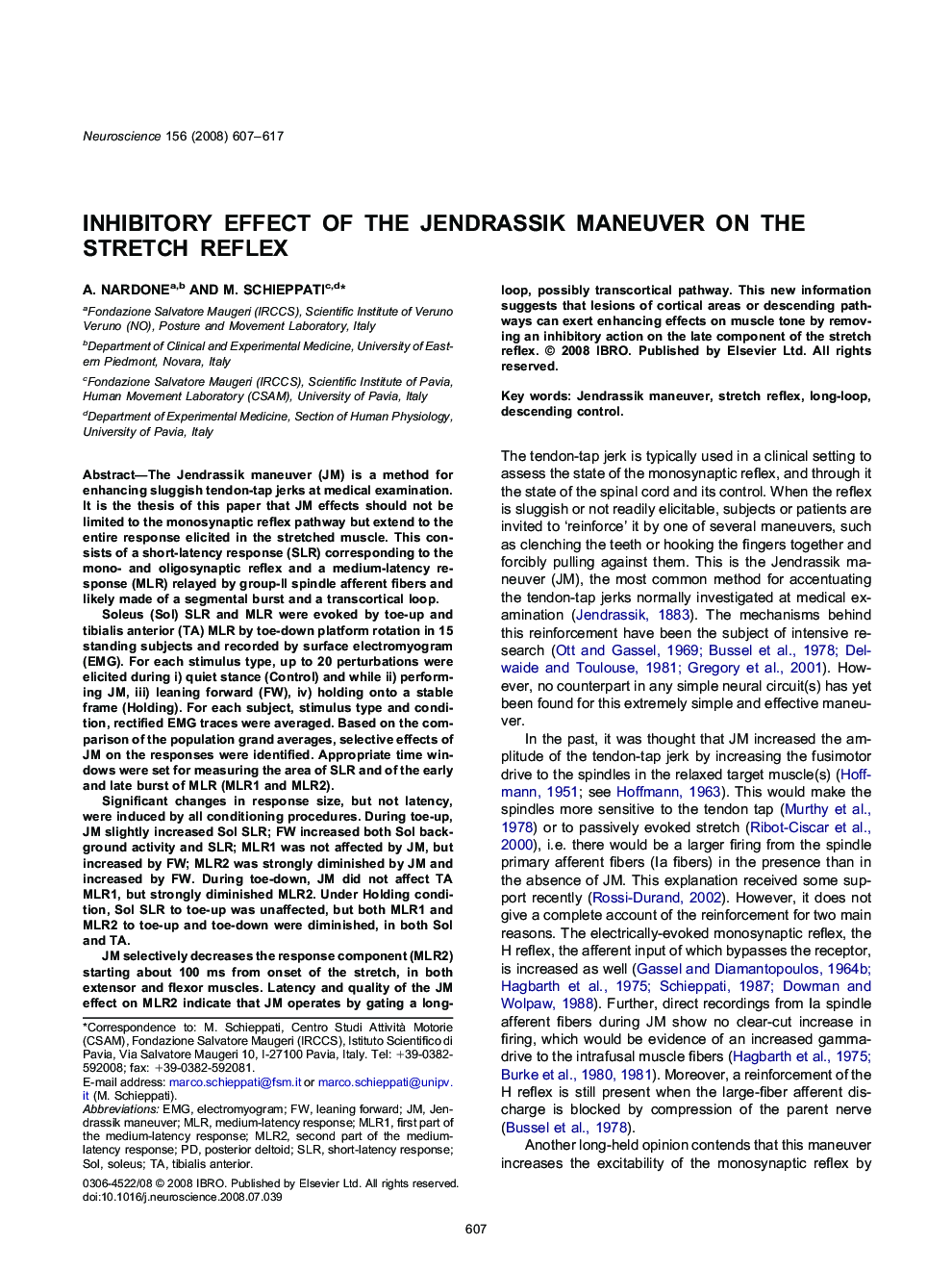| کد مقاله | کد نشریه | سال انتشار | مقاله انگلیسی | نسخه تمام متن |
|---|---|---|---|---|
| 4340340 | 1295790 | 2008 | 11 صفحه PDF | دانلود رایگان |

The Jendrassik maneuver (JM) is a method for enhancing sluggish tendon-tap jerks at medical examination. It is the thesis of this paper that JM effects should not be limited to the monosynaptic reflex pathway but extend to the entire response elicited in the stretched muscle. This consists of a short-latency response (SLR) corresponding to the mono- and oligosynaptic reflex and a medium-latency response (MLR) relayed by group-II spindle afferent fibers and likely made of a segmental burst and a transcortical loop.Soleus (Sol) SLR and MLR were evoked by toe-up and tibialis anterior (TA) MLR by toe-down platform rotation in 15 standing subjects and recorded by surface electromyogram (EMG). For each stimulus type, up to 20 perturbations were elicited during i) quiet stance (Control) and while ii) performing JM, iii) leaning forward (FW), iv) holding onto a stable frame (Holding). For each subject, stimulus type and condition, rectified EMG traces were averaged. Based on the comparison of the population grand averages, selective effects of JM on the responses were identified. Appropriate time windows were set for measuring the area of SLR and of the early and late burst of MLR (MLR1 and MLR2).Significant changes in response size, but not latency, were induced by all conditioning procedures. During toe-up, JM slightly increased Sol SLR; FW increased both Sol background activity and SLR; MLR1 was not affected by JM, but increased by FW; MLR2 was strongly diminished by JM and increased by FW. During toe-down, JM did not affect TA MLR1, but strongly diminished MLR2. Under Holding condition, Sol SLR to toe-up was unaffected, but both MLR1 and MLR2 to toe-up and toe-down were diminished, in both Sol and TA.JM selectively decreases the response component (MLR2) starting about 100 ms from onset of the stretch, in both extensor and flexor muscles. Latency and quality of the JM effect on MLR2 indicate that JM operates by gating a long-loop, possibly transcortical pathway. This new information suggests that lesions of cortical areas or descending pathways can exert enhancing effects on muscle tone by removing an inhibitory action on the late component of the stretch reflex.
Journal: Neuroscience - Volume 156, Issue 3, 15 October 2008, Pages 607–617